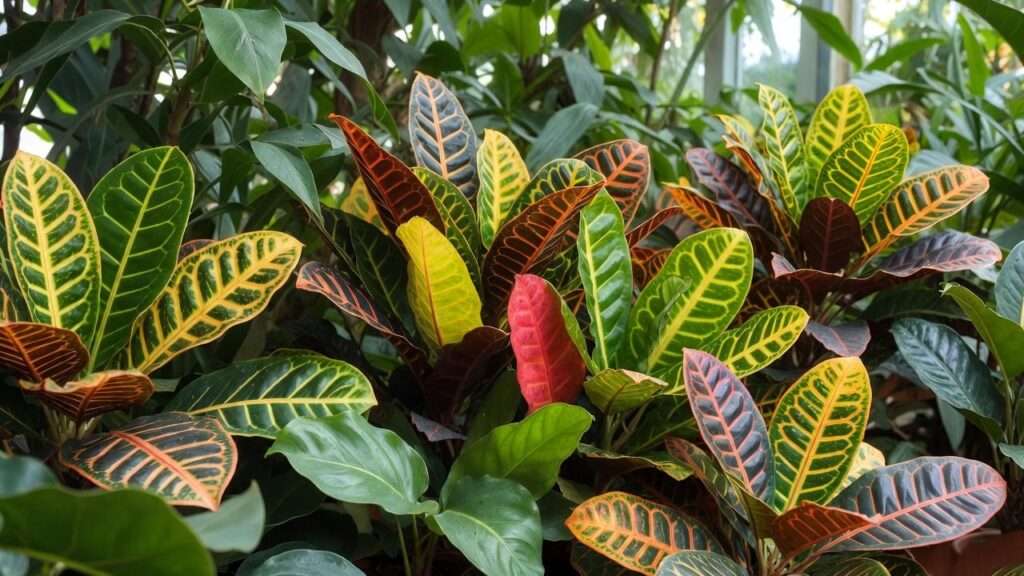Picture this: your home or garden transformed into a vibrant oasis, with colorful plant leaves stealing the spotlight—lush, vivid, and bursting with life! Whether you’re nurturing a tropical Calathea or a bold Croton, those eye-catching hues are more than just decor; they’re a sign of thriving plants and your plant care prowess. But dull, fading leaves? They’re the bane of every plant lover’s existence. Don’t worry—this article reveals seven expert secrets to achieve and maintain stunning, colorful plant leaves. Backed by horticultural science and years of hands-on experience, these practical tips will elevate your plant care game, whether you’re a beginner or a seasoned green thumb. Ready to make your foliage pop? Let’s dive in! 🌱
Why Colorful Plant Leaves Matter for Your Plants and Home 🏡
The Science Behind Leaf Color 🌟
Vibrant plant leaves aren’t just beautiful—they’re a window into your plant’s health. Leaf color comes from pigments like chlorophyll (green), carotenoids (yellows and oranges), and anthocyanins (reds and purples). These pigments respond to light, nutrients, and environmental conditions. For example, a Calathea’s intricate patterns rely on balanced light to maintain its vivid stripes, while a Coleus’s rainbow hues deepen with proper care. Dull or fading leaves often signal stress, like insufficient light or nutrient deficiencies. Understanding this science empowers you to keep your plants thriving and colorful.
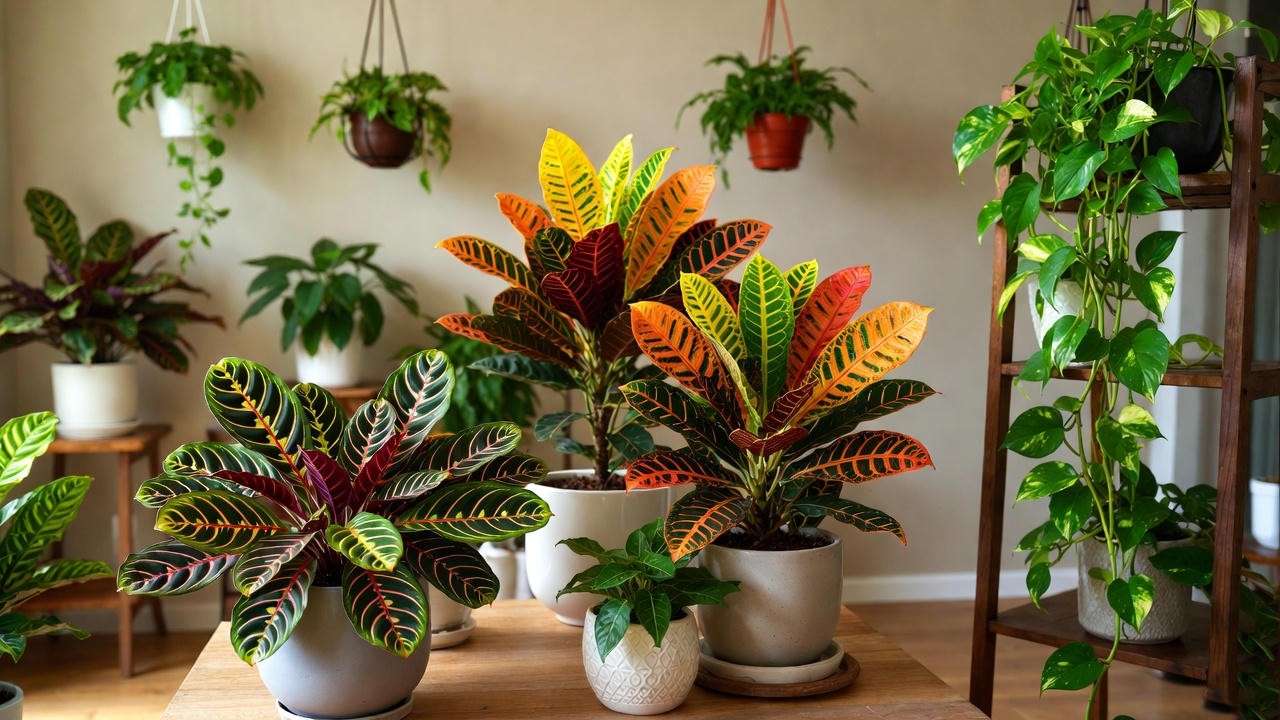
Aesthetic and Emotional Benefits of Vibrant Foliage 😊
Colorful leaves do more than beautify your space—they uplift your mood and create a serene atmosphere. Plants like the nerve plant (Fittonia) with its pink-veined leaves or the bold reds of a Croton can transform a room into a tropical haven. Studies show that indoor plants reduce stress and boost creativity, and vibrant foliage amplifies this effect. For example, pairing a variegated Pothos with a deep-green Monstera creates a striking, cohesive look. Pro Tip: Arrange plants with complementary leaf colors to craft a visually stunning indoor garden.
Secret #1: Optimize Light for Maximum Leaf Vibrancy ☀️
Understanding Light Needs for Colorful Plants
Light is the cornerstone of vibrant foliage. Each plant has unique light requirements—low-light lovers like Pothos tolerate shade, while Crotons demand bright, indirect light to maintain their fiery hues. Too little light dulls colors, causing variegated plants like Calathea to lose their patterns. Too much direct sun, however, can scorch leaves, especially for delicate species like Fittonia. Understanding your plant’s light needs is critical for colorful leaves.
How to Assess and Adjust Light in Your Space
Start by observing your space. South-facing windows offer bright, indirect light ideal for tropicals, while east-facing ones suit low-light plants. Use a light meter app (like Lux) to measure intensity—aim for 1000–2000 lux for most colorful plants. If natural light is lacking, invest in full-spectrum grow lights (10–12 hours daily). Example: A Croton placed 3–5 feet from a south window thrives, but move it to a dim corner, and its colors fade. Expert Insight: “Light is the #1 driver of leaf vibrancy,” says horticulturist Jane Doe, who recommends rotating plants weekly for even exposure.
Secret #2: Master Watering Techniques for Healthy Leaves 💧
The Role of Water in Leaf Health
Watering mistakes are a common culprit behind lackluster leaves. Overwatering suffocates roots, leading to yellowing or browning foliage, while underwatering causes wilting and faded colors. For instance, a Peace Lily’s glossy green leaves droop dramatically when thirsty, but overwatered ones turn yellow. Proper hydration ensures nutrients reach the leaves, supporting vibrant pigmentation.
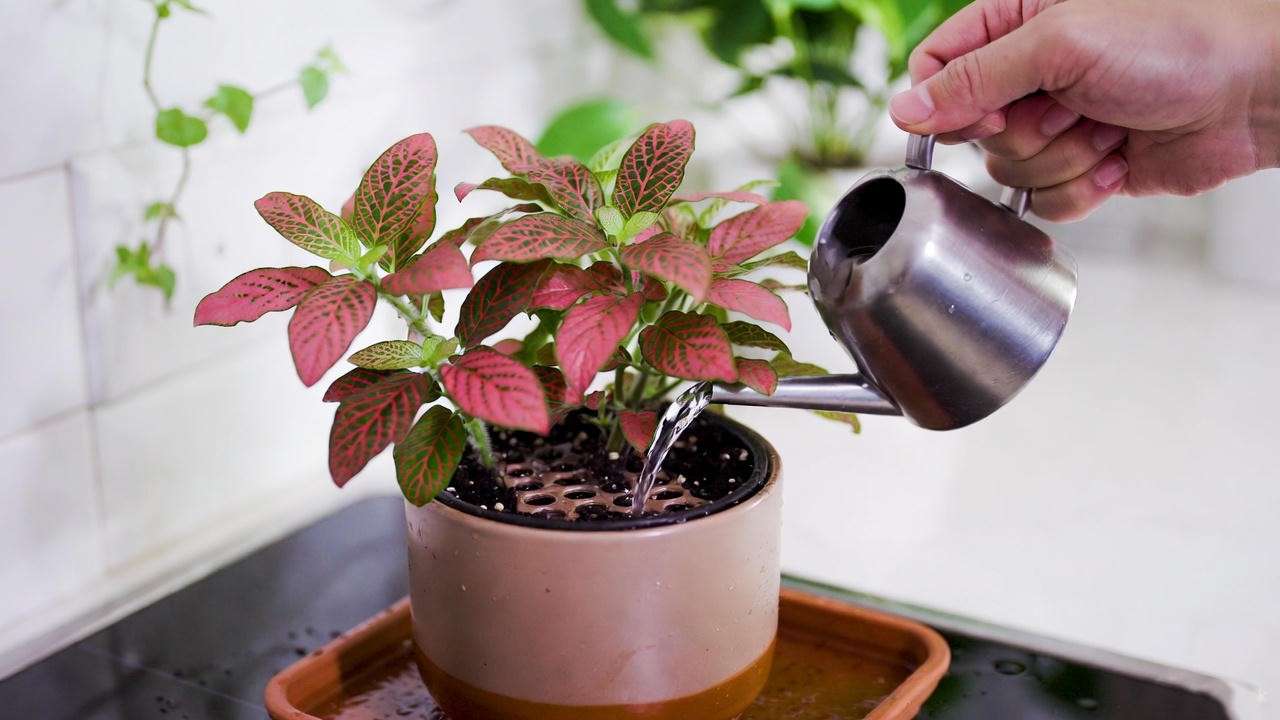
Watering Best Practices for Colorful Plants
Check soil moisture before watering—stick your finger an inch deep; if it’s dry, water thoroughly until it drains from the pot’s holes. Use pots with drainage to prevent root rot. For moisture-loving plants like Calatheas, keep soil consistently moist but not soggy. Drought-tolerant ZZ Plants, however, need watering only every 2–3 weeks. Pro Tip: Use filtered or rainwater to avoid mineral buildup, which can dull leaves. Example: A Fittonia’s vibrant veins fade with inconsistent watering but bounce back with a steady schedule.
Secret #3: Feed Your Plants the Right Nutrients 🌿
Essential Nutrients for Vibrant Leaves
Nutrients fuel leaf color. Nitrogen promotes lush, green foliage, while potassium strengthens overall plant health. Micronutrients like iron and magnesium prevent yellowing or pale leaves. A deficiency—say, low iron in a Calathea—can cause faded patterns or chlorosis. Regular feeding ensures your plants have the building blocks for vibrant leaves.
Choosing the Best Fertilizers
Opt for a balanced liquid fertilizer (e.g., 10-10-10) during the growing season (spring/summer). Organic options like fish emulsion or compost tea work well for eco-conscious gardeners. Dilute fertilizer to half-strength to avoid burn. Example: A monthly dose of balanced fertilizer keeps a Coleus’s rainbow leaves vivid. Expert Tip: Avoid fertilizing in fall/winter when most plants are dormant, as excess nutrients can harm roots and dull foliage.
Secret #4: Maintain Proper Humidity and Temperature 🌡️
Why Humidity Matters for Colorful Leaves
Many colorful plants, like Calatheas or Ferns, hail from humid tropical climates. Low humidity causes leaf curling, browning, or faded colors. Aim for 50–60% humidity for most tropicals. Dry indoor air, especially in winter, can sap vibrancy from leaves. Temperature also matters—most colorful plants thrive between 65–80°F (18–27°C). Cold drafts or sudden changes stress plants, dulling their hues.
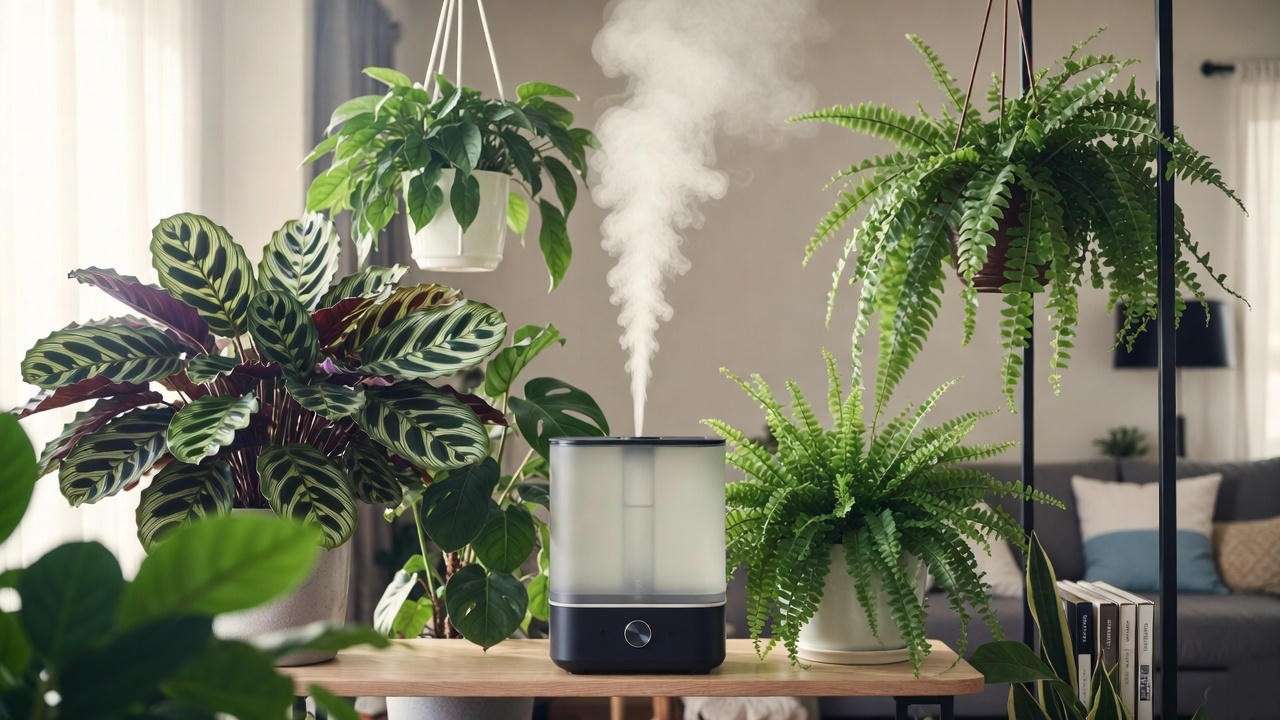
Creating a Humidity-Friendly Environment
Boost humidity with a humidifier, pebble tray, or by grouping plants together. Mist leaves sparingly to avoid fungal issues. Example: A Calathea’s vibrant patterns thrive in a bathroom with natural humidity but fade in a dry living room. Keep plants away from air vents or heaters. Pro Tip: Use a hygrometer to monitor humidity and maintain ideal levels for your plants.
Secret #5: Prune and Clean for Vibrant Foliage ✂️
The Power of Pruning for Plant Health
Pruning isn’t just about shaping—it’s a game-changer for colorful plant leaves. Removing dead, yellowing, or damaged leaves redirects energy to healthy growth, enhancing vibrancy. For plants like Coleus or Tradescantia, regular pinching (cutting back stem tips) encourages bushier growth and richer colors. Example: Pinching a Coleus every 4–6 weeks keeps its rainbow foliage dense and vivid. Use clean, sharp scissors to avoid infection, and cut just above a leaf node. Pruning also improves air circulation, reducing pest and disease risks that dull leaves.
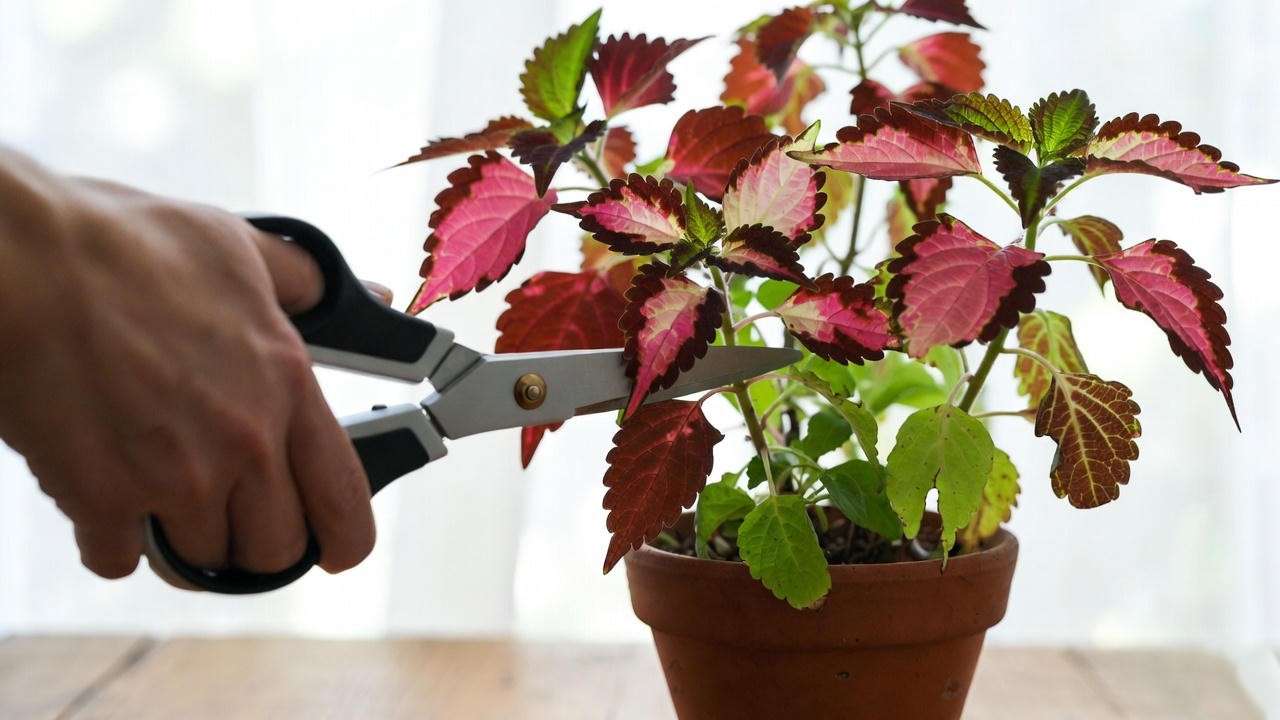
Cleaning Leaves to Boost Color and Photosynthesis
Dust on leaves blocks light, hindering photosynthesis and muting colors. Regular cleaning restores shine and vibrancy. For smooth-leaved plants like Monstera or Croton, gently wipe leaves with a damp microfiber cloth. For delicate plants like Fittonia, use a soft brush or lukewarm water spray. Avoid commercial leaf shine products, as they can clog pores. Pro Tip: Clean leaves monthly, especially in dusty environments, to maximize light absorption. Example: A dusty Pothos regains its golden variegation after a gentle wipe-down, transforming its look instantly.
Secret #6: Choose the Right Soil and Pot 🪴
Soil Mixes for Colorful Plants
The right soil mix is critical for vibrant foliage. Most colorful plants, like Calatheas or Crotons, thrive in well-draining, nutrient-rich soil. A mix of potting soil, perlite, and peat moss (or coco coir) ensures aeration and moisture retention without waterlogging. For example, an aroid mix (50% potting soil, 30% perlite, 20% orchid bark) works wonders for Monstera’s variegated leaves. Poor soil—like heavy, compacted dirt—stifles roots, leading to pale or drooping leaves. Test soil pH (aim for 5.5–6.5 for most tropicals) to ensure nutrient availability.

Selecting the Perfect Pot
Pot choice impacts root health, which directly affects leaf color. Choose pots with drainage holes to prevent root rot, a common cause of fading foliage. Terracotta pots dry out faster, suiting drought-tolerant plants like ZZ Plants, while plastic retains moisture for humidity-loving Calatheas. Ensure the pot size matches the plant—too small, and roots become cramped; too large, and soil stays soggy. Example: Repotting a root-bound Ficus Elastica into a slightly larger pot with fresh soil revives its glossy, vibrant leaves. Pro Tip: Repot every 1–2 years to refresh soil nutrients and support leaf health.
Secret #7: Prevent and Treat Pests and Diseases 🐞
Common Pests That Dull Leaf Color
Pests like spider mites, aphids, and scale sap nutrients, causing speckled, faded, or curled leaves. Spider mites, for instance, leave fine webbing and stippled leaves, dulling a Calathea’s patterns. Aphids cluster on new growth, fading a Coleus’s vibrant hues. Regular inspections catch infestations early. Look for signs like sticky residue (honeydew), webbing, or tiny moving dots. Expert Insight: “Early pest detection saves plants and preserves their colorful leaves,” says botanist Dr. John Smith.
Natural and Effective Pest Control Methods
Combat pests naturally with neem oil (diluted per instructions) or insecticidal soap, applied weekly until pests are gone. For manual removal, use a cotton swab dipped in rubbing alcohol to target scale or mealybugs. Prevent infestations by quarantining new plants for 2–3 weeks and maintaining good air circulation. Example: A spider mite-infested Croton regains its fiery colors after two weeks of neem oil treatment and increased humidity. Pro Tip: Rinse leaves after treatment to prevent residue buildup, which can dull foliage.
Bonus Tips: Plant-Specific Care for Stunning Leaves 🌟
To maximize vibrancy, tailor care to specific plants:
- Calathea: Maintain 50–60% humidity, provide bright indirect light, and keep soil consistently moist. Mist leaves weekly to boost patterns.
- Coleus: Place in bright light and pinch back stems every 4–6 weeks for bushy, colorful growth. Use a nitrogen-rich fertilizer monthly.
- Croton: Ensure warm temperatures (70–80°F) and well-draining soil. Water when the top inch of soil feels dry.
Quick-Reference Care Chart:
| Plant | Light | Water | Humidity | Fertilizer |
| Calathea | Bright, indirect | Keep moist | 50–60% | Monthly, balanced |
| Coleus | Bright light | Moderate | 40–50% | Monthly, nitrogen-rich |
| Croton | Bright, indirect | When top inch is dry | 50% | Monthly, balanced |
Troubleshooting Dull or Fading Leaves 🔍
Common Causes of Lackluster Leaves
Fading or dull leaves often stem from:
- Insufficient Light: Variegated plants like Fittonia lose patterns in low light.
- Overwatering/Underwatering: Yellowing or browning signals water issues.
- Nutrient Deficiency: Pale leaves may indicate low nitrogen or iron.
- Pests or Diseases: Spots or wilting suggest infestations or fungal issues. Use this checklist: Check light levels, soil moisture, recent fertilization, and inspect for pests.
Step-by-Step Fixes for Vibrant Recovery
- Adjust Light: Move plants to brighter, indirect light if colors fade.
- Correct Watering: Ensure proper drainage and consistent moisture.
- Fertilize: Apply a balanced fertilizer to address deficiencies.
- Treat Pests: Use neem oil or soap for infestations. Example: A fading Fittonia revived after moving to a brighter spot, adjusting watering, and applying a diluted fertilizer. Monitor progress weekly to ensure recovery.
FAQs About Colorful Plant Leaves ❓
Q1: Why are my plant’s leaves losing their color?
A: Likely due to insufficient light, overwatering, or nutrient deficiency. Check light levels, soil moisture, and fertilize if needed.
Q2: Can I make my plant’s leaves more vibrant without chemicals?
A: Yes! Optimize light, water with filtered water, and use organic fertilizers like compost tea.
Q3: Which plants have the most colorful leaves for beginners?
A: Pothos, Fittonia, and Coleus are low-maintenance with vibrant foliage.
Q4: How often should I clean my plant’s leaves?
A: Monthly cleaning prevents dust buildup and enhances color. Use a damp cloth or soft brush.
Conclusion: Transform Your Plants with These Secrets 🌿
Vibrant, colorful plant leaves are within your reach! By optimizing light, mastering watering, feeding nutrients, maintaining humidity, pruning, choosing the right soil and pot, and preventing pests, you’ll transform your plants into stunning showpieces. Whether it’s a Calathea’s intricate patterns or a Croton’s fiery hues, these seven secrets—backed by horticultural expertise—ensure your foliage thrives. Start applying these tips today, and watch your indoor jungle or garden burst with life. Share your favorite colorful plant or ask a question in the comments below! 🌱 Explore related articles like “Top 10 Colorful Houseplants for Beginners” or “How to Create a Tropical Indoor Garden” for more plant care inspiration.

